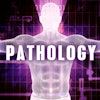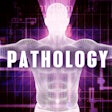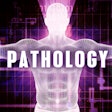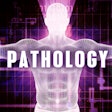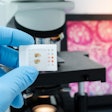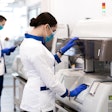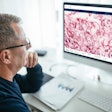
Survey data show that stress and burnout are common in laboratory workplaces and suggest a need for interventions to improve job satisfaction and well-being, according to reports published online February 21 in the American Journal of Clinical Pathology.
The data derive from online surveys conducted by the American Society for Clinical Pathology (ASCP).
"Changes in the [U.S. healthcare] system have resulted in burnout among [healthcare] professionals, a condition defined as 'a syndrome characterized by a high degree of emotional exhaustion and high depersonalization (i.e., cynicism) and a low sense of personal accomplishment from work,' " wrote Edna Garcia, director of scientific engagement at the ASCP, and colleagues.
The data released included the following:
- A survey of 408 pathologists across the U.S.: Respondents were predominantly female, white, and had worked in the field for an average of 14.6 years. Pathologists practicing in both anatomic and clinical pathology accounted for 53.4% of respondents.
- A survey of 4,613 lab professionals across the U.S.: Respondents were predominantly female, white, and had worked in the field for an average of 18.2 years. Professionals working as medical technologists/medical laboratory scientists/clinical laboratory scientists accounted for 60.2% of respondents.
Satisfied with profession, but stressed out
In the pathologist survey, 71.1% of respondents reported being somewhat satisfied to very satisfied with their job. Most felt they were happy with their compensation, that their duties aligned with their job title, and that their values were in line with those of their department leaders and institution.
However, while 91.2% said they enjoyed their work as a pathologist, only 56.2% felt appreciated by their institution, Garcia and colleagues reported.
Other key findings from the pathologist survey included the following:
- Job stress is common, with 96.1% reporting they experience "a little bit" to "a lot of stress." Most commonly, stress was related to workload or call duties.
- Many reported feeling overwhelmed by their workload (slightly overwhelmed: 37.6%, moderately overwhelmed: 29.2%, and very overwhelmed: 14.3%). Top reasons included workload quantity, additional responsibilities, and understaffing.
- Burnout was common, with 71.4% of pathologists having experienced it at some point and about one-third currently grappling with it.
- In the face of burnout, 31.2% of respondents considered getting a similar position elsewhere, retiring, or changing careers completely.
- The burnout rate was highest in clinical pathology and lowest in anatomic pathology.
"Creating targeted interventions based on the results of this survey may help improve the type and quality of wellness programs for pathologists," the authors wrote. "Trust among team members, managers and clinicians, and institutions can help reduce stress and increase collaboration, engagement, and motivation."
More bad news on burnout
The ASCP's survey of lab professionals also showed high satisfaction with the professional role. However, a feeling of not being appreciated was common, as were job-related stress and burnout.
"If the field aims to address the need for more graduates from accredited laboratory training programs to fill the high vacancies left by retirement ([i.e.], the next generation of laboratory personnel) and address retention issues, a focus on the laboratory professional's well-being is key," Garcia and colleagues wrote.
Key findings from the survey of lab professionals included the following:
- Most respondents (53.4%) reported feeling a lot of stress. Stress was commonly attributed to workload or call duties.
- Many reported feeling overwhelmed by their workload (slightly overwhelmed: 37.6%, moderately overwhelmed: 29.5%, and very overwhelmed: 17.9%). Top reasons included understaffing and quantity of workload.
- Burnout was common, with 85.3% of lab professionals reporting having experienced it at some point and almost 50% currently dealing with it.
- In the face of burnout, respondents considered changing careers, getting a career in a different lab, seeking employment in a related field, or retiring.
- The burnout rate was highest for molecular biologists and lowest for phlebotomists.
"While the results of this survey show that institutions implement stress reduction and well-being initiatives, it remains unclear how institutions 'developed their plans for selecting a particular intervention and who was engaged in developing the intervention,' " the authors wrote. "Whereas wellness programs promote well-being, they don't address other critical issues laboratory professionals may encounter in the laboratory."
Among other resources for addressing such workforce issues, Garcia and colleagues noted that the ASCP offers courses and coaching resources for dealing with stress and improving coping skills.
"A number of resources are available to help people with stress and burnout," the authors wrote. "The key is finding things that work at an individual level, taking time to learn about and trying different things."



